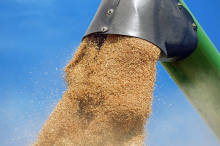 |
| Food imports are becoming more burdensome for the poorest countries |
Food imports are placing an increasing burden on the world’s poorest countries, according to a new report released by the UN Food and Agriculture Organisation (FAO) on July 10th. The “Food Outlook” finds that food imports assume a large and growing share of foreign exchange earnings for many Low-Income Food Deficit Countries.
The world food import bill has roughly tripled since 2000, reaching $1.43 trillion in 2017. However for those countries which are the most vulnerable to food shortages the figure has increased fivefold. The report looks at trends and the composition (animal proteins, fruits and vegetables, cereals, beverages, oilseeds and coffee, tea and spices) of food import bills since the turn of the millennium. The authors write that food imports have risen at an annual global average rate of 8% since 2000, but the rates have been in the double-digits for the vast majority of the poorest countries. The world’s least-developed countries (LDCs) now spend 28% of all merchandise export earnings on food imports, nearly double the share of 2005. Developed countries, which also have a larger GDP per capita, only spend an average of 10% of their export earnings on food imports.
The Food Outlook also found that the share of cereals compared to higher-value foods in the import basket has not declined in poorer countries, while it has declined considerably in wealthier ones. The authors point to the problem that poorer countries may be paying more and more for less food. “Due to the fact that virtually all international transactions are priced in US dollars, importing can also be encumbered by adverse movements in domestic currencies vis-a-vis the US dollar,” the report reads. “A further negative development is that exchange rates of numerous countries have in general been falling in real terms against the US dollar, bringing about diminishing purchasing power, and again, at a higher intensity than in developed countries. This shows a trend that has “been deteriorating over time, portending an increasing challenge, especially for the poorest countries, to meet their basic food needs from international markets,” said Adam Prakash, a FAO economist and author of the study









No comments:
Post a Comment